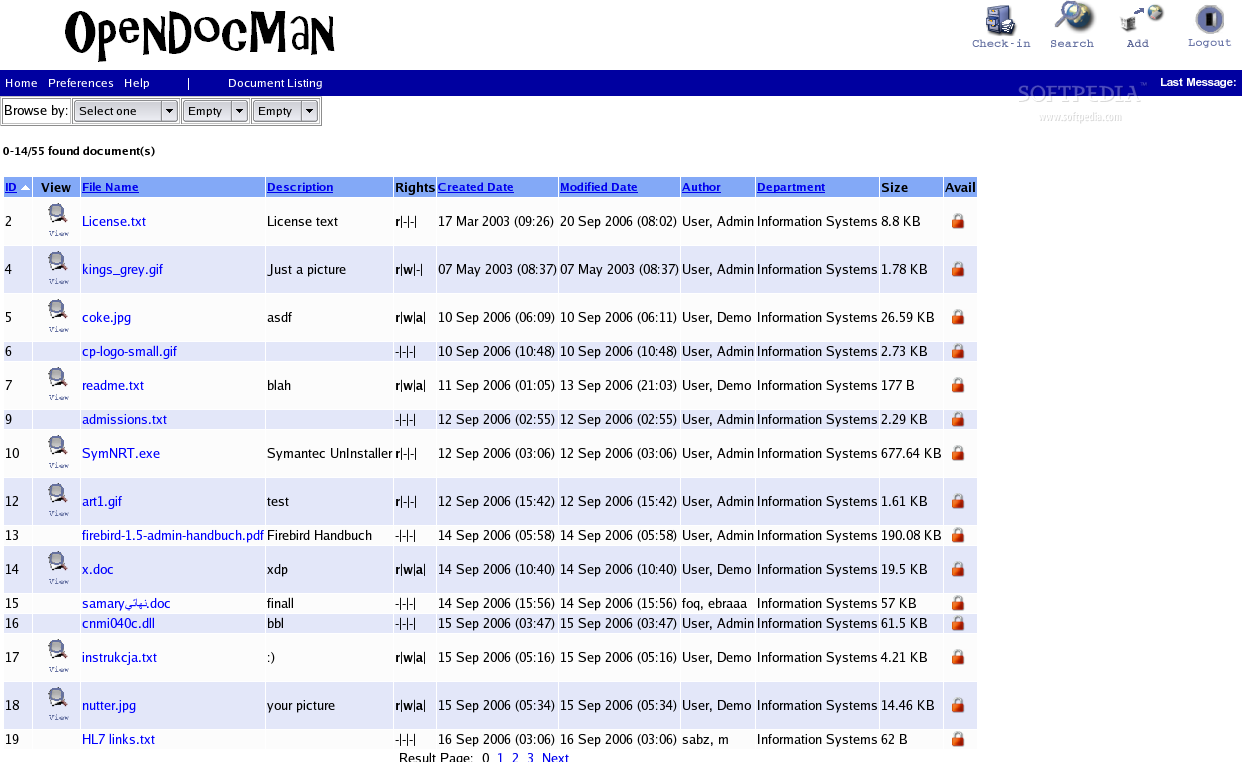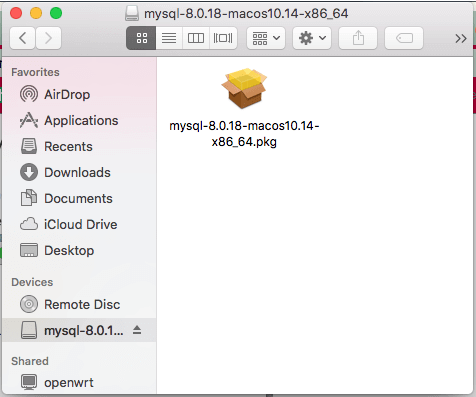Jan 03, 2021 Mysql 5.6 Mac Os X Download Windows 7 Important Platform Support Updates » I have erased and installed OSX 10.11 El Capitan and I have been following through this tutorial to get MySQL up and running on the new OS X. The first step was to download MySQL For Mac OS X 10.9 (x86, 64-bit), DMG Archive (works on 10.11, they recommended in the. MySQL Community Edition is a freely downloadable version of the world's most popular open source database that is supported by an active community of open source developers and enthusiasts. MySQL Cluster Community Edition is available as a separate download. The reason for this change is so that MySQL Cluster can provide more frequent updates.
The first step in setting up a MySQL database server on your Mac is to download the MySQL installer. MySQL offers a free edition called the MySQL Community Server. Click the link below to be taken to the download page for the MySQL Community Server. In the 'Select Operating System' box, select macOS.
MySQL Community Server Download
Click the Download button next to the first option, the DMG archive download. At the time of this writing, version 8 of the community server is the default download.
Once the DMG file is downloaded, double-click the DMG file to open the disk image. Once the disk image is opened, a new Finder window will appear with a .pkg file named something like the following:
mysql-X.X.XX-macos10.XX-x64_64.pkgTo install MySQL, do the following steps:
- 1. Double-click the .pkg file. This will launch the MySQL installer
- 2. Continue with the default options. At one point during the installation, the installer will ask whether to use strong password encryption or legacy password encryption. Some MySQL tools do not yet support strong password encryption. If the tools you are using to connect to MySQL do not support strong password encryption, select the legacy password encryption option. Note that RazorSQL supports strong password encryption.
- 3. Make sure to enter a password for the root MySQL user when prompted, and select the 'Start MySQL Server once the installation is complete' option as well.
When the installer completes your MySQL server will be installed and running on your Mac. Once you have gotten to this point, you have a running MySQL server with one user - the root user - and the default database named mysql. Now it is time to connect to your MySQL database, create a user, and create a database.
To get connected to your MySQL database, you can use a tool like RazorSQL. RazorSQL can be downloaded from the Download link on the header at the top of this page. Once RazorSQL is downloaded and installed, do the following to connect to your MySQL database:
- 1. Select the Connections -> Add Connection Profile menu option
- 2. Select MySQL as the database type and click 'Continue'
- 3. Enter any name you wish for the connection profile name and enter a name for the profile folder if desired
- 4. For the Login, enter root. For the password, enter the root password you gave to the MySQL installer
- 5. For the Host or IP Address, enter localhost
- 6. For the database name, enter mysql
- 7. Click Connect
At this point, you should be connected to your local MySQL database in RazorSQL.
After connecting, you can create a new database by doing the following:
- 1. Select the DB Tools - Create -> Create Database menu option
- 2. Enter a database name and then click 'Generate SQL'
- 3. Click the Execute SQL button to create the database.
If you would like to manually create the MySQL database, execute the following command. This creates a new database named sample with UTF8 support:
create database sample character set 'utf8mb4'Below is a screen shot of the create database window.
After creating the sample database, we can then create a new user. This will allow us to connect to the MySQL database without using the root user.
To create a new user, select the DB Tools -> Create -> Create User menu option. If you installed MySQL version 8, make sure the 'Use MySQL 8 Syntax' box is selected.
If you want the user to be able to access your MySQL instance from other machines, make sure to check the 'All Domains' option, or else click the 'Select Domains' button to add specific ip addresses / hosts.
You will need to give the new user access to the sample database. To do this, either click the 'Select Databases' button and add the sample database, or click the 'All Databases' box to give the new user access to all databases.
Click the Generate SQL button to preview the commands for creating the user. Click the Execute SQL button to create the user. Below are example commands generated by the create user tool. These can be manually executed to create the user if not using RazorSQL or the create user tool:
CREATE USER 'testuser'@'localhost' IDENTIFIED BY 'testpass';CREATE USER 'testuser'@'%' IDENTIFIED BY 'testpass';GRANT ALL PRIVILEGES ON *.* TO 'testuser'@'localhost';GRANT ALL PRIVILEGES ON *.* TO 'testuser'@'%';flush privileges; Below is a screen shot of the RazorSQL MySQL Create User tool.
After creating the new user, you can set up a new RazorSQL connection to the database using the new user instead of the root user. Once you are connected with your new user, below are some sample commands to create a new table, insert data into the table, and query data in the table.
CREATE TABLE department ( dnumber INT NOT NULL, dname VARCHAR(25) NOT NULL, PRIMARY KEY (dnumber));insert into department values (1, 'Headquarters');insert into department values (4, 'Administration');insert into department values (5, 'Research');select * from department;The above commands can be executed manually, or you can use the following tools in RazorSQL to create the table and insert the data using visual tools:
RazorSQL MySQL Create Table Tool
RazorSQL MySQL Table Editor
I installed mySQL for my Mac. Beside starting the SQL server with mySQL.prefPane tool installed in System Preference, I want to know the instruction to start from command-line. I do as follow: Aft. File: Installing MySQL on MacOS X for Specify Revised: 6 July 2015 Page 4 Open the installed file once the download is complete, the window below will appear. Open the downloaded package such as “mysql‐5.6.13‐osx10.7x8664.pkg” as an example package name shown below. Download the disk image (.dmg) file (the community version is available here) that contains the. /myst-v-end-of-ages-mac-download/.

For a list of macOS versions that the MySQL server supports, see https://www.mysql.com/support/supportedplatforms/database.html.
Mysql For Mac Os
Download Mysql 5
MySQL for macOS is available in a number of different forms:
Native Package Installer, which uses the native macOS installer (DMG) to walk you through the installation of MySQL. For more information, see Chapter 2, Installing MySQL on macOS Using Native Packages. You can use the package installer with macOS. The user you use to perform the installation must have administrator privileges.
Compressed TAR archive, which uses a file packaged using the Unix tar and gzip commands. To use this method, you will need to open a Terminal window. You do not need administrator privileges using this method, as you can install the MySQL server anywhere using this method. For more information on using this method, you can use the generic instructions for using a tarball, Installing MySQL on Unix/Linux Using Generic Binaries.
In addition to the core installation, the Package Installer also includes Chapter 3, Installing a MySQL Launch Daemon and Chapter 4, Installing and Using the MySQL Preference Pane, both of which simplify the management of your installation.

Download Mysql Extension
Mysql Version 5.6 Download

Mysql Mac Os Download
For additional information on using MySQL on macOS, see Chapter 5, General Notes on Installing MySQL on macOS.